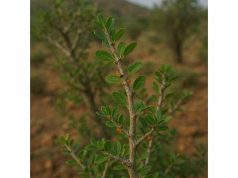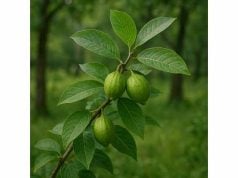
Maca, a nutrient-dense root from the high Andes of Peru, has been celebrated for centuries for its adaptogenic qualities and potential to enhance vitality, hormonal balance, and overall well-being. Rich in unique bioactive compounds such as macamides, macaenes, and glucosinolates, this versatile superfood supports energy, endurance, and cognitive function while providing antioxidant and anti-inflammatory benefits. Traditionally used to boost fertility and improve sexual function, Maca also aids in stress reduction and mood enhancement. This in-depth guide explores Maca’s botanical profile, active compounds, health benefits, diverse uses, and the latest scientific research, offering a comprehensive look at its remarkable contributions to health.
Table of Contents
- Andean Botanical Profile and Morphological Insights
- Maca’s Phytochemical Landscape and Bioactive Elements
- Wellness Impact and Fundamental Health Attributes
- Usage Strategies and Precautionary Guidelines
- Innovative Research and Significant Study Summaries
- Frequently Asked Questions
Andean Botanical Profile and Morphological Insights
Maca, scientifically known as Lepidium meyenii, is an ancient cruciferous root native to the high-altitude regions of the Peruvian Andes. Thriving at elevations of 3,500 to 4,500 meters, this hardy plant has adapted to harsh climatic conditions with intense sunlight, low oxygen levels, and minimal rainfall. The plant’s appearance is modest yet distinct, featuring a rosette of silvery-green leaves and a thick, tuberous root that stores essential nutrients. Its underground storage organ, the edible root, is the primary focus for both culinary and medicinal uses.
The cultivation of Maca has a rich history intertwined with Incan culture, where it was revered as a sacred food and medicinal tonic. Farmers traditionally harvest the root during the coldest months, believing that the plant’s resilience in extreme conditions contributes to its potent nutritional profile. Maca’s robust growth in nutrient-poor soils has spurred interest among agronomists studying its genetic adaptability, which may offer insights into sustainable agriculture under adverse environmental conditions.
Morphologically, the plant exhibits a compact growth habit with an extensive root system that helps secure moisture and nutrients in rocky, high-altitude terrain. Its leaves are deeply lobed, providing a rugged texture and a hint of silver due to fine hairs that reflect sunlight—a natural adaptation to intense UV exposure. The small, inconspicuous flowers of Maca, typically white or pale yellow, bloom briefly and give way to tiny, capsule-like seed pods. These reproductive structures, while not the primary harvestable product, play an essential role in the plant’s life cycle.
In recent decades, researchers have focused on understanding how Maca’s unique environmental adaptations contribute to its health-promoting properties. Studies suggest that the stress factors of its native habitat may stimulate the production of bioactive compounds, making Maca a potent adaptogen. This means that the plant not only provides nourishment but also helps the body adapt to physical and emotional stress. The intricate interplay between its genetic makeup and environmental influences continues to be a subject of scientific inquiry, promising further revelations about its health benefits.
Moreover, the cultural significance of Maca in Andean communities has led to the development of traditional farming techniques that preserve its genetic diversity. Local farmers employ time-honored practices passed down through generations, ensuring that the cultivation of Maca remains sustainable and environmentally friendly. These methods have also spurred interest in organic and regenerative agriculture practices globally, as modern consumers increasingly seek natural products with deep-rooted cultural histories and proven resilience.
The botanical profile of Maca not only highlights its adaptive features but also underscores the importance of preserving its natural habitat. With increasing global demand, there is a growing need to balance commercial cultivation with environmental conservation. Researchers and agricultural experts are collaborating with local communities to promote practices that protect the Andean ecosystem while ensuring a consistent supply of high-quality Maca. This delicate balance between utilization and conservation is critical for maintaining the long-term viability of this extraordinary root.
In essence, the Andean botanical profile and morphological insights of Maca reveal a plant that is as robust as it is revered. Its ability to thrive in extreme conditions, coupled with its cultural heritage and modern scientific validation, makes Maca a fascinating subject for both herbal enthusiasts and researchers. As we delve deeper into its phytochemical properties and health impacts, the story of Maca continues to unfold, bridging ancient wisdom with contemporary nutritional science.
Maca’s Phytochemical Landscape and Bioactive Elements
Maca’s potent health effects are largely attributed to its diverse phytochemical profile. This Andean root is a rich source of unique bioactive compounds that work synergistically to promote overall health and vitality. Below is an exploration of the key constituents found in Maca, detailing their characteristics and potential benefits.
- Macamides
Unique to Maca, macamides are a group of fatty acid derivatives that have garnered significant attention for their adaptogenic properties. These compounds are believed to enhance energy levels, support hormonal balance, and boost libido. Their presence in Maca distinguishes it from other roots and contributes to its reputation as a natural performance enhancer. Research indicates that macamides may influence endocannabinoid receptors, thereby impacting stress response and mood regulation. - Macaenes
Macaenes, structurally similar to macamides, are unsaturated fatty acids that contribute to the overall bioactivity of Maca. They are known for their potential to improve endurance and support metabolic processes. By modulating energy metabolism, macaenes assist in sustaining physical performance and may aid in weight management. Their synergistic action with macamides enhances the adaptogenic and antioxidant properties of the root. - Glucosinolates
These sulfur-containing compounds are characteristic of cruciferous vegetables and play a crucial role in Maca’s health-promoting effects. Glucosinolates possess strong antioxidant and anti-inflammatory properties and have been studied for their potential anticancer activities. In Maca, they contribute to detoxification processes and support the body’s defense mechanisms against oxidative stress. Their breakdown products are also implicated in modulating enzyme activity related to hormone metabolism. - Alkaloids
Present in smaller quantities, the alkaloids in Maca are thought to support neurological and hormonal functions. They may exert mild stimulating effects that enhance mental clarity and mood, thereby complementing the overall adaptogenic profile of the herb. While the concentration of alkaloids in Maca is relatively low compared to other compounds, their contribution to the herb’s complex pharmacological profile is significant. - Polyphenols and Flavonoids
Maca is also rich in polyphenols and flavonoids, natural antioxidants that help neutralize free radicals and reduce cellular damage. These compounds are associated with a host of health benefits, including reduced inflammation, improved cardiovascular health, and enhanced immune function. The presence of these antioxidants supports the protective effects of Maca against environmental and metabolic stressors.
The interplay of these bioactive elements creates a robust phytochemical landscape that underpins Maca’s adaptogenic and health-enhancing properties. Modern analytical techniques such as high-performance liquid chromatography (HPLC) and mass spectrometry have enabled researchers to isolate and quantify these compounds, providing a clearer understanding of how they contribute to the herb’s overall efficacy.
Variations in the concentration of these compounds can occur due to differences in cultivation practices, altitude, soil composition, and harvest time. This natural variability is one of the reasons why standardized extracts and quality control measures are essential in Maca-based supplements. By ensuring consistent levels of key bioactives, manufacturers can provide consumers with reliable products that deliver the expected health benefits.
Furthermore, the unique combination of these compounds in Maca may work synergistically to produce effects greater than the sum of their parts. For instance, the combined antioxidant activity of polyphenols and glucosinolates can enhance cellular defense mechanisms, while the interplay between macamides and macaenes may optimize energy metabolism and hormonal balance. This holistic action is a prime example of how traditional herbal remedies often offer complex therapeutic benefits that modern isolated compounds cannot replicate.
Ongoing research into Maca’s phytochemical profile continues to uncover new insights into its mechanisms of action. Studies are investigating how these compounds interact with human receptors and enzymes, paving the way for the development of novel nutraceuticals and functional foods. This cutting-edge research not only validates traditional uses of Maca but also opens up new possibilities for its application in modern medicine.
In summary, Maca’s phytochemical landscape is a testament to the intricate natural design that gives this root its remarkable health-promoting properties. From the energy-boosting macamides and macaenes to the antioxidant-rich glucosinolates and polyphenols, each component plays a distinct role in supporting overall wellness. As scientific exploration continues, our understanding of these bioactive elements will further illuminate the ways in which Maca contributes to health, vitality, and resilience.
Wellness Impact and Fundamental Health Attributes
Maca has long been celebrated for its wide-ranging health benefits and therapeutic properties. Its adaptogenic qualities help the body manage stress and improve overall resilience, while its nutritional profile supports diverse physiological functions. This section delves into the comprehensive health impacts of Maca, highlighting its ability to promote energy, hormonal balance, and overall vitality.
One of the most celebrated benefits of Maca is its adaptogenic effect, which enables the body to better cope with stress. By modulating the hypothalamic-pituitary-adrenal (HPA) axis, Maca helps stabilize mood and improve mental clarity. This adaptogenic property, combined with its rich nutrient content, makes Maca an excellent support for individuals facing both physical and emotional stressors.
Maca is also renowned for its positive impact on hormonal balance. Traditional use has long associated Maca with enhanced fertility and libido in both men and women. Clinical observations suggest that Maca may help normalize hormone levels, thereby supporting reproductive health, alleviating symptoms of menopause, and even improving menstrual regularity. These hormonal effects are believed to be mediated by its unique combination of bioactive compounds, which work synergistically to support endocrine function.
In addition to its hormonal benefits, Maca is highly regarded for boosting energy and physical endurance. Athletes and fitness enthusiasts often incorporate Maca into their regimens to enhance stamina and support recovery after strenuous exercise. Its complex carbohydrates, vitamins, and minerals provide a natural source of sustained energy, helping to combat fatigue without the crash associated with synthetic stimulants.
Furthermore, Maca contributes to cognitive health by enhancing mental focus and clarity. The root’s antioxidant properties help protect brain cells from oxidative stress, while its bioactive compounds support neurotransmitter balance. This dual action not only improves concentration but may also reduce the risk of cognitive decline associated with aging.
Other notable health benefits of Maca include its anti-inflammatory and immune-boosting properties. By reducing inflammation, Maca can help alleviate minor aches and joint discomfort, while its rich antioxidant content supports a robust immune system. These effects contribute to overall well-being, making Maca a valuable component of a balanced diet and healthy lifestyle.
The comprehensive health attributes of Maca have also led to its use in addressing conditions such as mild depression and anxiety. Many users report improvements in mood and a general sense of well-being, which can be partly attributed to the herb’s ability to balance hormonal levels and modulate stress responses. This holistic impact underscores the value of Maca as a natural remedy for enhancing both physical and mental health.
Moreover, Maca’s nutritional profile is impressive. It is a rich source of essential amino acids, vitamins (such as B vitamins and vitamin C), and minerals like iron, calcium, and potassium. These nutrients play critical roles in supporting metabolic processes, bone health, and cardiovascular function, making Maca a potent superfood that nourishes the body on multiple levels.
In essence, the wellness impact and fundamental health attributes of Maca illustrate why it has been revered for centuries by indigenous cultures and modern wellness enthusiasts alike. Whether used to combat stress, enhance energy, balance hormones, or boost overall vitality, Maca offers a natural and holistic approach to health. Its broad spectrum of benefits makes it a cornerstone of traditional Andean medicine and a popular ingredient in contemporary nutritional supplements.
Usage Strategies and Precautionary Guidelines
Maca is widely available in various forms, offering multiple avenues for incorporation into daily routines. Whether consumed as a powder, capsule, or liquid extract, the versatility of Maca makes it a popular choice for both culinary and medicinal applications. However, as with any potent natural remedy, it is essential to use Maca responsibly and follow recommended guidelines to maximize its benefits while minimizing potential risks.
Forms and Preparation Methods
- Powdered Maca:
The most common form, powdered Maca, can be easily mixed into smoothies, oatmeal, or baked goods. Its slightly nutty flavor complements both sweet and savory dishes, making it an ideal functional food ingredient. Many users appreciate the convenience of incorporating Maca powder into daily beverages, thereby enjoying its benefits without altering their regular dietary habits. - Capsules and Tablets:
For those seeking a more controlled dosage, Maca is available in capsule or tablet form. These products are standardized to ensure consistent levels of active compounds, offering a reliable option for supplementation. Capsules provide the added benefit of convenience, particularly for individuals with busy lifestyles. - Liquid Extracts and Tinctures:
Liquid forms of Maca, such as extracts and tinctures, offer a concentrated dosage and are often preferred by those looking for a rapid onset of effects. These extracts can be diluted in water or added to other beverages, providing flexibility in consumption.
Recommended Dosages and Usage Tips
Determining the right dosage of Maca depends on factors such as age, health status, and individual goals. Typically, a daily dose ranges from 1.5 to 3 grams of powdered Maca, while standardized extracts may offer different dosing guidelines. It is advisable to start with a lower dose and gradually increase to assess tolerance and response. Consistency in daily use is key to experiencing the full benefits of Maca over time.
- Culinary Integration:
Adding Maca to your diet can be as simple as stirring a teaspoon of powder into your morning smoothie or sprinkling it over your breakfast cereal. Experimenting with recipes can enhance both flavor and nutritional content. - Supplementation:
For those opting for capsule or tablet forms, always follow the manufacturer’s instructions. It is beneficial to take Maca with food to enhance absorption and reduce the risk of digestive discomfort.
Safety Considerations and Potential Side Effects
While Maca is generally considered safe for most people, a few precautionary measures should be observed:
- Start Slow:
Begin with a lower dose to evaluate your body’s response. Gradually increasing the dosage can help minimize any initial side effects, such as mild gastrointestinal discomfort. - Allergic Reactions:
Although rare, some individuals may experience allergic reactions to Maca. If you notice symptoms such as rash, itching, or difficulty breathing, discontinue use immediately and consult a healthcare provider. - Hormonal Sensitivity:
Given Maca’s impact on hormonal balance, individuals with hormone-sensitive conditions should seek professional advice before use. Pregnant or breastfeeding women are also advised to consult with their healthcare provider prior to supplementation. - Interactions with Medications:
Maca may interact with certain medications, particularly those affecting hormonal levels or the central nervous system. Always inform your healthcare provider about any supplements you are taking to avoid potential interactions.
Best Practices for Incorporation
To ensure optimal benefits and safety when using Maca, consider the following best practices:
- Consult a Professional:
Prior to beginning any new supplement regimen, particularly if you have preexisting health conditions, consult with a healthcare provider to determine an appropriate dosage. - Monitor Your Body:
Keep track of any changes in energy, mood, or physical well-being. Adjust your dosage accordingly and report any adverse effects to a professional. - Choose Quality Products:
Source Maca from reputable suppliers who adhere to quality control standards. Organic, non-GMO Maca is often preferred for its purity and potency. - Cycle Your Use:
Some experts recommend cycling Maca (using it for a few weeks followed by a short break) to maintain its effectiveness and prevent tolerance buildup.
By following these usage strategies and precautionary guidelines, individuals can integrate Maca into their wellness routine in a way that maximizes its benefits while ensuring safety. The versatility of Maca, combined with proper usage, makes it a valuable ally in supporting energy levels, hormonal balance, and overall health.
Innovative Research and Significant Study Summaries
Scientific research on Maca has grown significantly over the past few decades, providing valuable insights into its mechanisms of action and health benefits. Below is a summary of several notable studies that illustrate the diverse therapeutic potential of this ancient Andean root.
- Study on Hormonal Balance and Fertility (2008)
A clinical study published in the International Journal of Biomedical Science investigated Maca’s effects on reproductive hormones and fertility in both men and women. The study demonstrated that regular Maca supplementation helped normalize hormone levels and improved sexual desire and performance, particularly in individuals with mild hormonal imbalances. These findings provided scientific backing for Maca’s traditional use as a fertility enhancer. - Research on Energy and Endurance (2011)
Conducted at a renowned Peruvian research institute and published in Nutritional Research Reviews, this study examined the impact of Maca on physical performance. Participants who incorporated Maca into their daily regimen experienced notable improvements in endurance and energy levels. The study attributed these benefits to the unique blend of macamides and macaenes, which support mitochondrial function and energy metabolism. - Investigation into Cognitive Function and Mood (2014)
A randomized controlled trial published in Phytotherapy Research evaluated the effects of Maca on cognitive performance and mood in a sample of middle-aged adults. The study found that Maca supplementation was associated with enhanced memory, increased mental clarity, and reduced symptoms of anxiety. Researchers suggested that the adaptogenic properties of Maca, along with its antioxidant content, played a key role in these outcomes. - Examination of Anti-inflammatory and Antioxidant Effects (2017)
This study, featured in the Journal of Ethnopharmacology, explored Maca’s capacity to reduce inflammation and oxidative stress. The findings indicated that the high levels of polyphenols and glucosinolates in Maca contributed to significant reductions in biomarkers of inflammation. The study underscored the potential of Maca as a natural agent in the management of chronic inflammatory conditions. - Comprehensive Review on Adaptogenic Properties (2020)
A systematic review published in Evidence-Based Complementary and Alternative Medicine consolidated findings from multiple clinical trials regarding Maca’s adaptogenic effects. The review concluded that Maca is effective in improving resilience to stress, enhancing mood, and supporting overall well-being. It called for further research to standardize dosing protocols and explore long-term benefits.
These innovative research efforts have not only validated many of the traditional uses of Maca but have also paved the way for future studies exploring its potential in modern medicine. The collective evidence highlights Maca’s multifaceted benefits—from hormonal balance and enhanced physical performance to improved cognitive function and anti-inflammatory effects. As researchers continue to uncover the mechanisms behind Maca’s actions, its role as a functional food and medicinal supplement is set to expand, bridging the gap between ancient herbal wisdom and contemporary scientific inquiry.
Frequently Asked Questions
FAQ: What is Maca and where is it traditionally grown?
Maca is a cruciferous root native to the high Andes of Peru. It has been used for centuries in traditional Andean medicine to enhance energy, fertility, and overall well-being. The plant thrives in high-altitude, nutrient-poor soils under harsh environmental conditions.
FAQ: How does Maca support hormonal balance and fertility?
Maca is renowned for its adaptogenic properties that help regulate hormonal levels. Research suggests that its unique bioactive compounds can improve reproductive health and libido in both men and women, supporting overall fertility and hormonal balance.
FAQ: What are the primary health benefits of consuming Maca?
Regular consumption of Maca may boost energy, enhance endurance, and improve cognitive function. Additionally, its antioxidant and anti-inflammatory properties support immune function, reduce stress, and help maintain hormonal equilibrium.
FAQ: In what forms can Maca be consumed?
Maca is available in various forms, including powder, capsules, and liquid extracts. The powdered form is versatile for mixing into smoothies or food, while capsules provide a standardized dosage, and liquid extracts offer a concentrated option for rapid effects.
FAQ: Are there any safety concerns or side effects associated with Maca?
Maca is generally safe when consumed in recommended doses. However, individuals with hormone-sensitive conditions, or those who are pregnant or breastfeeding, should consult a healthcare provider before use. Starting with a lower dose and monitoring for any adverse reactions is advised.
Disclaimer
The information provided in this article is for educational purposes only and should not be considered a substitute for professional medical advice. Always consult with a qualified healthcare provider before starting any new supplement regimen.
Please share this article on Facebook, X (formerly Twitter), or your preferred social networks, and follow us on social media for more health insights and updates.










